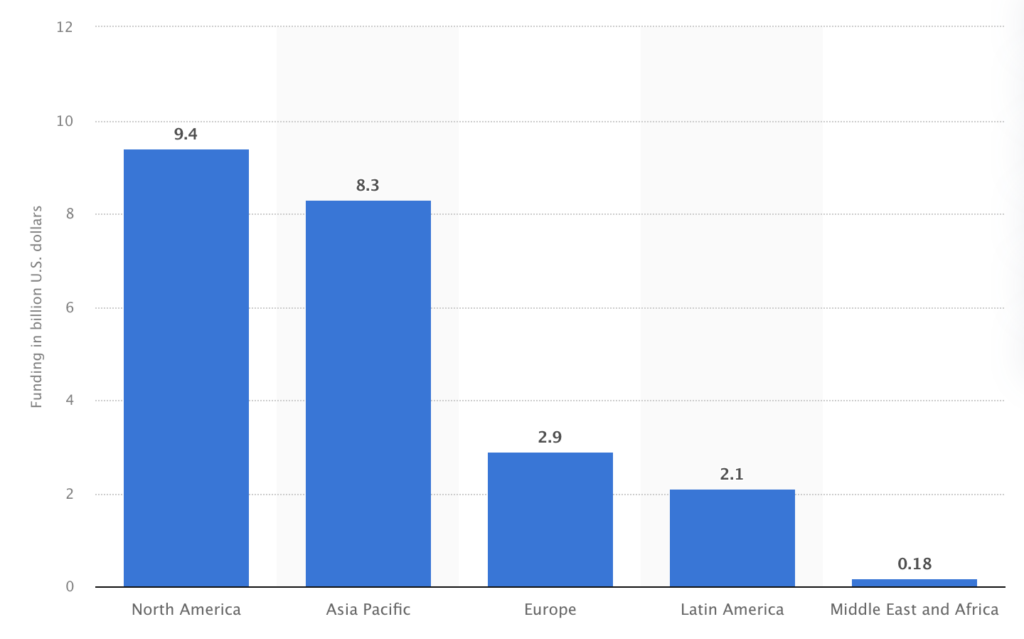The last mile delivery refers to the final step in a supply chain, where goods are transported from a distribution centre to the end customer’s doorstep.
Last mile delivery performs a crucial role in the logistics process, as it represents the final interaction between businesses and consumers. The efficiency and effectiveness of the last mile delivery can significantly impact customer satisfaction and loyalty.
In this blog, we shall delve into the last mile delivery business model, explore the concept, its key components, and discuss its significance in the supply chain and customer experience. We also highlight the importance of market research and analysis and explore emerging trends and technological advancements in the sector.
Last Mile Delivery Business Model
The last mile delivery business model encompasses various elements that enable timely and efficient delivery of goods. Key components of this model include:
a) Warehousing and Fulfilment:
Warehousing and fulfilment play key roles in the last mile delivery business model. This includes inventory management, order picking, packaging, and preparing shipments for transportation.
It involves storing products in strategically located warehouses and efficiently managing inventory. By optimizing warehousing operations, businesses can ensure faster order processing and timely delivery.
b) Transportation:
Transportation is an indispensable aspect of the last mile delivery. It involves the movement of goods from the warehouse or fulfilment centre to the end customer’s location.
This can be done through various modes such as delivery vans, bikes, drones, or even walking couriers, depending on the delivery distance, the weight of the package, and nature of business.
c) Route Optimisation:
Route optimisation is the process of deducing the shortest, time-saving, and cost-effective delivery route. It considers factors such as delivery addresses, traffic conditions, delivery time schedules, and vehicle capacity.
By optimizing routes, companies can reduce delivery costs, improve delivery speed, and enhance customer satisfaction.
d) Tracking and Visibility:
Tracking and visibility enable real-time monitoring of the delivery process. It allows businesses and customers to track the location and status of the package throughout the entire delivery journey.
This feature provides transparency and improves customer experience by keeping them informed about the estimated delivery time and any potential delays.
e) Customer Service:
Customer service plays an imperative role in the last mile delivery business model. It involves providing support and assistance to customers throughout the delivery process.
This includes handling inquiries, addressing complaints, and providing updates on delivery status. Excellent customer service can lead to loyal customers and positive brand reputation.
Significance of Last Mile Delivery:
The last mile is a decisive link in the supply chain and has a substantial impact on the overall customer experience. It is often the most expensive and time-consuming phase of delivery.
Poor last mile performance can cause dissatisfaction among customers, poor word-of-mouth, and negative brand reputation.
Meanwhile, efficient last mile operations can lead to improved customer satisfaction, long term profits, increased customer loyalty, good word-of-mouth, and a competitive advantage.

Importance of Market Research and Analysis:
Market research and analysis are valuable pieces in shaping the last mile delivery strategy. Understanding the target market’s preferences, demographics, and behaviour can help identify the specific needs and expectations of customers.
Market research also assists in assessing competition, identifying market gaps, and developing unique value propositions. By gathering insights through surveys, focus groups, and data analysis, businesses can tailor their last mile operations to meet customer demands effectively.
Identifying Target Markets and Evaluating Potential:
To identify target markets for last mile delivery services, businesses should consider factors such as population density, demographics, e-commerce adoption rates, and local infrastructure.
Evaluating potential markets involve analysing the competitive landscape, assessing the presence of established delivery providers, and identifying unmet needs or underserved areas.
By selecting target markets strategically, businesses can focus their resources and efforts to maximize the chances of their success.
Emerging Trends, Consumer Behaviour, and Technological Advancements:
These are some key aspects and emerging trends in the last mile delivery business model. By understanding and leveraging these factors, businesses can enhance their delivery operations, improve customer satisfaction, and stay competitive in an evolving marketplace.
Same-Day and On-Demand Delivery:
The demand for faster delivery options, such as same-day and on-demand delivery, is increasing. Customers expect quick, efficient, and convenient deliveries, and businesses are adopting strategies to meet these expectations.
This trend has led to the rise of delivery services that offer expedited shipping options and immediate fulfilment.
Sustainable and Green Delivery Solutions:
With growing environmental concerns, there is a rising focus on sustainable and green delivery solutions. Companies are exploring eco-friendly delivery methods, such as electric vehicles, bike couriers, and alternative fuel options.
This trend aligns with the increasing consumer preference for environmentally conscious businesses.
Automation and Robotics:
Automation and robotics are transforming the last mile delivery landscape. Technologies like autonomous vehicles, drones, and robotic systems are being developed and deployed to streamline the delivery process.
Automation can help reduce costs, increase delivery speed, and improve operational efficiency.
Contactless Delivery:
The COVID-19 pandemic accelerated the need for adoption of contactless delivery. Customers are increasingly opting for delivery methods that minimize physical contact, such as no-contact drop-offs and digital signatures.
This trend is likely to continue as hygiene and safety remain important considerations for consumers.
Data Analytics and Artificial Intelligence:
Data analytics and artificial intelligence (AI) are revolutionising the last mile delivery industry. By leveraging data from various sources, businesses can gain insights to optimise routes, predict demand, and improve operational efficiency.
AI-powered algorithms can analyse vast amounts of data and make real-time decisions, enabling businesses to deliver faster and more accurately.
Conclusion:
The last mile delivery business model is a crucial component of modern-day logistics, directly impacting customer satisfaction and loyalty. By understanding the significance of last mile delivery, businesses can focus on optimizing their operations and leverage emerging trends and technological advancements to meet the evolving needs of customers.
Through market research and analysis, businesses can identify target markets, evaluate their potential, and develop tailored strategies for success. Embracing innovation and staying abreast of consumer behaviour and emerging trends will be key to thriving in the competitive last mile delivery sector.
Entrepreneurs or businesses aiming to foray into this segment have an able product from out stable. Our white label courier dispatch software solution can be customised for various on-demand courier delivery services as per your last mile delivery business requirements.

After an Engineering degree and a Diploma in Management I devoted 16+ years working in the automotive industry. My innate skill and extreme passion in writing, encouraged me to adopt it up as a profession. I have been writing for more than 10+ years in the software industry. The 400+ blogs I published are informative, exhaustive and interesting to a professional and causal reader.








